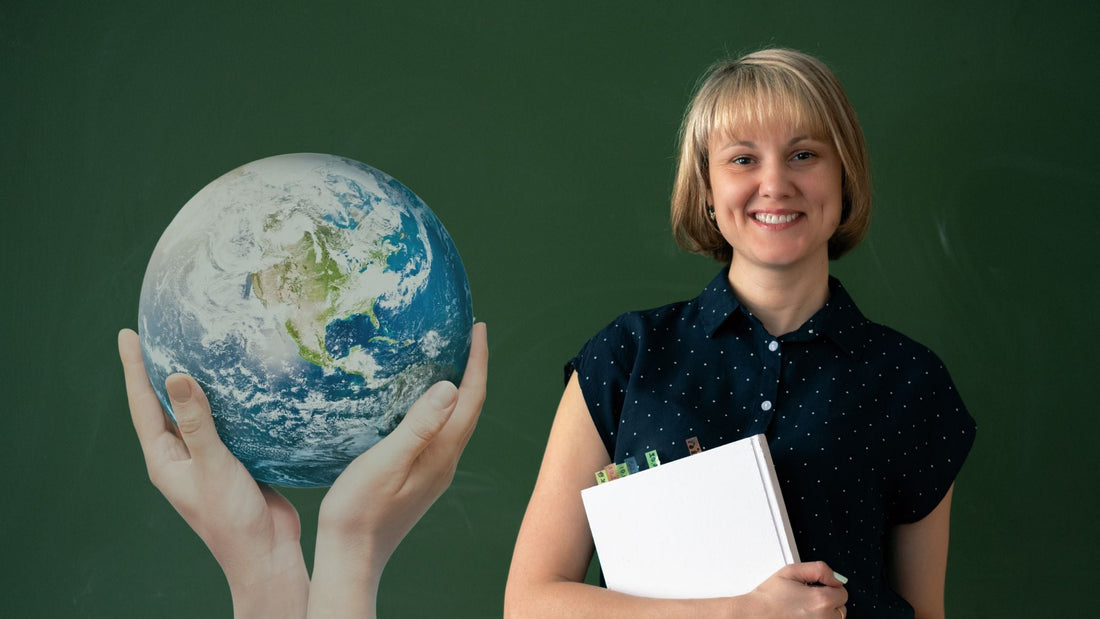
5 Challenges of Teaching History in International Classrooms (and How to Overcome Them)
Share
Teaching history in international classrooms presents unique challenges. In a multicultural environment, where students hail from various cultural, socio-economic, and educational backgrounds, presenting historical content in a way that resonates with all learners can be difficult. This complexity intensifies when teaching Third Culture Kids (TCKs)—students whose identities are shaped by multiple cultures, and whose understanding of history might differ significantly from the traditional narratives typically presented in local curricula.
In this article, we will explore the five primary challenges of teaching history in an international classroom and offer strategies to address them. If you're unfamiliar with the term "Third Culture Kid," be sure to check out our previous article on this subject to understand the complexities these wonderful students bring to your classroom and how you can best channel them for everyone's benefit.
1. Diverse Cultural Perspectives on History
One of the most prominent challenges in international classrooms is that students come with varying cultural perspectives and biases toward history. What is seen as a historical "fact" in one country may be viewed differently in another. For instance, events like colonization, global wars, or political revolutions are often interpreted in diverse ways depending on one's cultural background.
Solution:
As an educator, it’s important to foster an environment where multiple viewpoints are respected. Encourage students to explore different perspectives through primary sources, literature, and discussions. By helping students recognize the subjectivity of historical narratives, you create opportunities for deeper understanding and critical thinking. Additionally, consider introducing comparative history lessons where students can analyze the same event from multiple cultural perspectives.
2. Navigating Sensitive Topics
International classrooms often include students from countries with recent or ongoing conflicts. History lessons may inadvertently touch on topics that are sensitive or even traumatic for some students. For example, discussions about the Holocaust, apartheid, or more recent civil conflicts can bring up painful memories for students from affected regions.
Solution:
Creating a safe and respectful classroom environment is essential. It is crucial to approach sensitive topics with empathy and understanding. Set clear guidelines for discussions, emphasizing respectful listening and open-mindedness. Offering students the opportunity to express their perspectives in a controlled, constructive way can promote healing and understanding.
3. Balancing Western and Non-Western History
Many international schools follow Western-centric curricula, but this can alienate students who come from non-Western countries. The dominance of Western history in many educational frameworks can marginalize students’ own histories, which may make them feel disconnected from the content.
Solution:
Ensure your history curriculum is inclusive and representative of global histories. Integrate more non-Western historical narratives to reflect the backgrounds of your students. Including history from Asia, Africa, Latin America, and the Middle East will help students see themselves reflected in the lessons, fostering a deeper connection to the subject matter. Consider using interdisciplinary approaches that incorporate literature, art, and geography to enrich students' understanding of diverse cultures.
4. Varying Levels of Historical Knowledge
Students in international classrooms often come with varied levels of historical knowledge, especially when it comes to their home countries’ histories. A student from Germany may have in-depth knowledge of European history, while a student from the United States might be more familiar with American history. These disparities can lead to gaps in understanding when discussing global events.
Solution:
Start with foundational concepts and be mindful of your students' knowledge gaps. Create opportunities for students to share what they know about their own country’s history, allowing them to teach their peers and expand everyone's understanding. Collaborative learning activities, such as group projects or debates, can also help bridge these gaps and encourage peer-to-peer learning.
5. Engaging Third Culture Kids (TCKs)
Third Culture Kids bring unique challenges to the classroom. Their diverse cultural experiences and multi-layered identities can make it difficult for them to connect with the historical narratives presented in class. TCKs may struggle to relate to a history that doesn’t reflect their own experiences or personal histories.
Solution:
Recognizing the unique experiences of TCKs is essential for creating an inclusive classroom. Encourage TCKs to explore their personal histories and how these intersect with the larger historical narratives. Providing space for students to share their stories can foster a sense of belonging and help them engage with the material in a more personal way. Additionally, incorporate projects that allow students to investigate history from their own cultural backgrounds, creating opportunities for self-reflection and deeper learning.
Teaching history in an international classroom is a dynamic and rewarding challenge. By recognizing the diverse cultural backgrounds and experiences of your students, and by fostering an inclusive, respectful classroom environment, you can help all students engage with the subject matter in meaningful ways. This approach will not only promote academic success but also create a more empathetic and understanding learning community.
If you're looking for additional resources to help teach history in an international classroom, I encourage you to check out The Human History Project resources. Created by Zoe Miller, a former TCK, these materials were designed with international students, TCKs, and teachers in mind, providing a framework for teaching history that is inclusive, reflective, and globally relevant.
References
Said, E. W. (1993). Culture and imperialism. Vintage Books.
Useem, R. H., & Downie, R. (1976). Third culture kids: The experience of children of expatriates. Praeger Publishers.
Waters, J. L. (2006). Geographies of cultural capital: Educating Third Culture Kids. Geoforum, 37(6), 892-906. https://doi.org/10.1016/j.geoforum.2006.03.002
